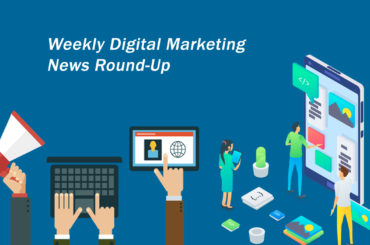Around 15 years ago, the nofollow attribute was launched to deal with comment spam. It became one of the recommended methods for identifying advertising-related or sponsored links. The internet has changed a lot since nofollow’s introduction in 2005 and its high time that nofollow to develop as well.
Yesterday, Google announced two new link attribute that offer webmasters additional ways for webmasters to detect the nature of specific links to the nature of Google Search. These, along with nofollow, are summarized below:
rel=’’ sponsored”: Utilize the sponsored attribute for detecting links on your site which were created as a part of sponsorships, advertisements or other compensation agreements.
rel=’’ugc’’: UGC stands for User Generated Content. This attribute is suggested for links inside user-generated content like forum posts and comments.
rel=’’nofollow’’: Use the attribute for cases in which you want to link to a page. However, don’t do any endorsement, like passing along ranking credit to another image.
When nofollow was introduced, Google won’t count any link marked in this way as a signal for use within Google’s search algorithms. However, this has changed now. All link attributes, such as sponsored, UGC, and nofollow-are considered as hints about which links to consider or exclude within Search. Google will use all such hints, with other signals to clearly understand how to analyze and use links within its systems appropriately.
Why not ignore like links, as was the case with nofollow? Links contain valuable information which can help you to enhance search, like the words within links describe the content they point at. Studying all links, Google comes across can help them have a clear understand the unnatural linking pattern. By moving to a hint model, we no longer lose this vital information, while enabling site owners to pinpoint that some links shouldn’t be given the weight of a first-party endorsement.
Is It Essential To Change My Existing Nofollows?
No. If you utilize nofollow now as a way for blocking sponsored links, or for signifying that you don’t give assurance for a page which you link to, it will continue to be supported. There is absolutely no need for changing any nofollow links which you already have.
Can we use more than one rel value on a link?
Yes, you can utilize more than one rel value on a link. For instance, rel=’’ugc sponsored’’ is a credible, valid attribute which hints that the link came from user-generated content and is sponsored. It is valid for using nofollow with new attributes-like rel=”nofollow ugc”-if you wish to go backwards-compatible with services which don’t support new attributes.
If I Utilize Nofollow For Ads Or Sponsored Links, Do I Need To Change Them?
No. You can continue using nofollow as a method for flagging these links for avoiding possible link scheme penalties. You don’t have to change any existing markup. If you have systems which are included in the new links, you can keep them. But Google suggests that you switch over to rel=’’sponsored’’ if or when it is convenient.
Is a Flag Ad or Sponsored Links Necessary?
Yes. If you want to avoid a possible link scheme action, use rel=’’ sponsored’’ or rel=’’nofollow’’ to flag the links. Google gives precedence to the use of ‘’sponsored’’, but both will be considered the same, for this purpose.
What Happens If I Use The Wrong Attribute On A Link?
There is no wrong attribute except when it comes to sponsored links. In case you flag a UGC link or a non-ad link as ‘’sponsored’’, Google will see the hint. However, the impact, if any would be that we may not count the link as a credit for another page. In this case, it is not different from the status quo of numerous UGC and non-ad links already as nofollow.
It is an issue of going the other way. Any link which is an ad or sponsored needs to be utilized as ‘’sponsored’’ or ‘’unfollow’’, as mentioned above. Using ‘’sponsored’’ is preferred, but ‘’nofollow’’ is acceptable.
Why should I consider using all these new attributes?
Using new attributes enables Google to process links in a better way for analysis of the web. That can include your content if people who link with you utilize the attributes.
Not Opting For A ‘’Hint’’ Approach Encourage Link Spam In Comments and UGC content?
Many sites which enable third-parties to contribute to content already deter link spam in different ways, including moderation tools which can be integrated into numerous blogging platforms and human review. Link attributes of ‘’ugc’’ and ‘’nofollow’’ will persist being a hindrance. In the majority of cases, the move to a hint model won’t change the nature of the way links are treated. Google will treat them just in the way they treated nofollow in the past. Google will continue assessing how to utilize within Search in the manner Google did for situations in which no attributions were offered.
Why do such attributes and changes go into effect?
All link attributes, sponsored, ugc and nofollow, work as hints for Google to be included for ranking purposes. For crawling and indexing purposes, nofollow will become a hint from March 1, 2020.





